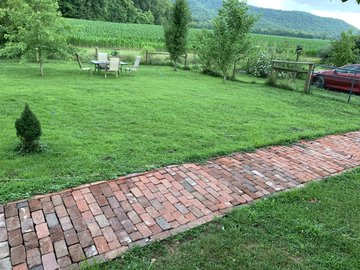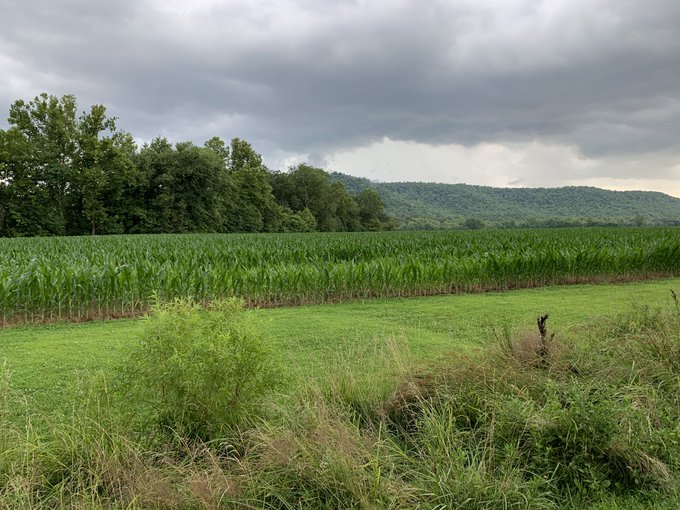This might be a post more suited for The Pirate’s Cove, and I did notify William Teach about the article, but with my nice, brilliantly green lawn, and the whole farm, I just had to write something!
The Suburban Lawn Will Never Be the Same
Homeowners from Las Vegas to Sydney are swapping real grass for artificial turf as climate change forever alters what a normal yard looks and smells like.
By Brian Eckhouse and Siobhan Wagner | Friday, July 8, 2022
Judy Dunn moved to her home in the Las Vegas suburbs from Washington state in late 1998, when there was little concern about water levels at nearby lakes. Dunn could nurture the verdant lawn of her dreams in a valley of cacti and sand that developers had recast as an oasis. But then a drought arrived and never left, and now local agencies are fining more residents for wasting water.The lawn part of the farm. I planted all of the trees myself, and did the brick sidewalk as well.
For Dunn, the final straw arrived last summer. Lake Mead, historically America’s largest reservoir, plunged to its lowest level since 1937 and the first-ever water cuts were ordered on a Colorado River system that benefits about 40 million people including Dunn. “If we don’t start saving water, we’re not going to have any,” says the 76-year-old.
So, Dunn opted to install an artificial lawn, a choice being made by more and more residents of Southern Nevada—one of the many places that’s getting drier as the planet warms. For some, it’s the cash-for-grass rebates being offered by local water agencies. For others, it’s the realization that the classic lawn is increasingly unsustainable in a time of megadrought. And then there are the residents coaxed into the shift by the water notices or fines.
Well, Las Vegas is in, you know, the desert, with average daily high temperatures reaching 95º F from June 3rd through September 16th, and 105º on July 13th. You move to Vegas, and you get the desert, and desert weather, and desert rainfall.
For water suppliers worldwide, climate change is raising the stakes. Italy in July declared a state of emergency as water levels in its largest river dropped to the lowest in 70 years. The US Southwest is suffering through the worst drought in over a century. Within the next 30 years, droughts may impact three quarters of the world’s population. While plastic turf poses its own climate challenges, it’s increasingly seen as a viable alternative to real green yards that devour precious water. . . . .Beyond the drainage ditch and its too-high weeds is the corn field, another brilliant green part of the farm
A couple of decades ago, artificial turf was often a thin carpet atop a hard surface—rough on the knees as well as the eyes. Athletes playing on it complained that it wore their legs out. But as the product improved, so did homeowners’ interest. From the US to the UK, artificial grass retailers have seen sales tick up during pandemic lockdowns, when housebound property owners put their money toward home improvements. Indeed, Google Trends shows a worldwide surge in searches for “artificial grass” during the middle of 2020.
I don’t know if it’s still there, because the last time I saw it was the late 1980s, but Newport News Shipbuilding and Drydock Company had, outside their public office, which was not inside the shipyard’s gates, some integrally-colored green concrete where grass would have been expected, by their normal sidewalks! Of course, Newport News got plenty of rain, but this way, the shipyard didn’t have to maintain the grass!
Me? I live in the Bluegrass State, and I’ve got to love all of the rain we get!

